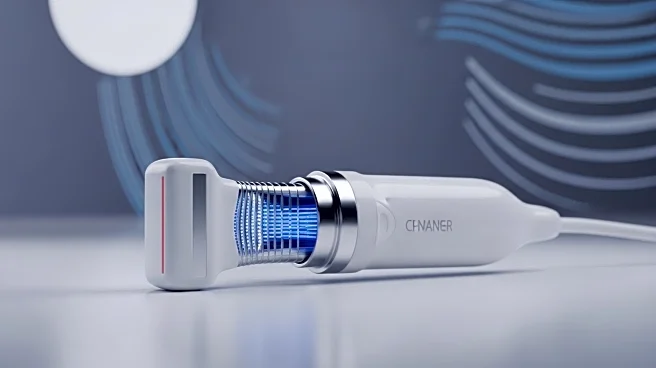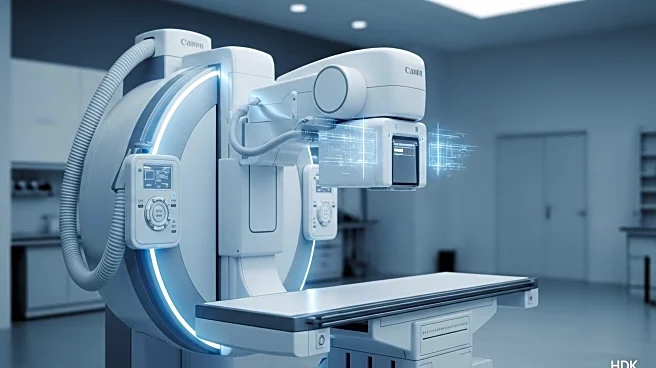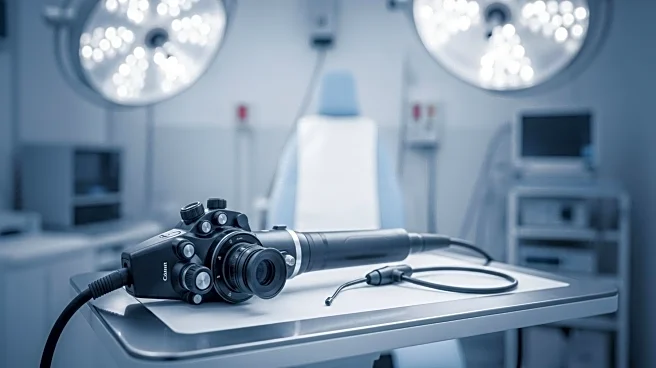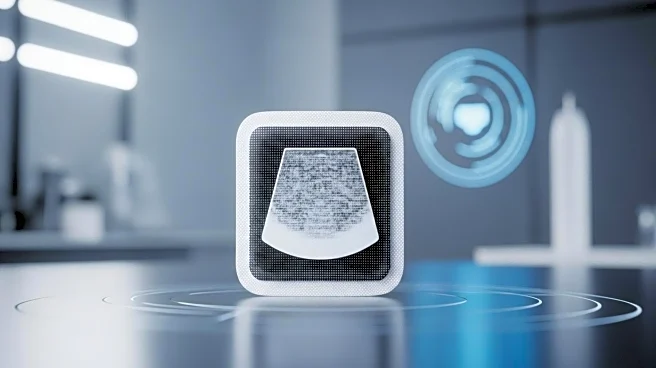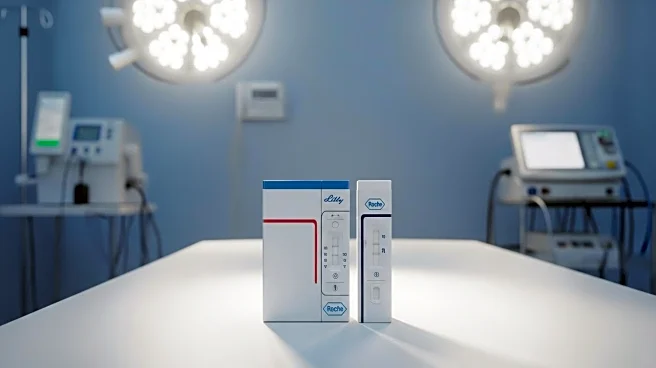What is the story about?
What's Happening?
A new ultrasound imaging system has been developed, utilizing transducers and multiplexers on a flexible substrate, combined with a log-delta CMOS ADC. This system aims to address challenges in ultrasound imaging by employing Thin-Film Transistors (TFTs) as multiplexers, reducing the number of interconnections and enhancing imaging capabilities. The prototype features a transducer array with separate transmit and receive apertures, and uses a flexible a-IGZO TFT technology to multiplex RX elements. This approach minimizes system complexity while maintaining a high frame rate. The system also incorporates Time Gain Compensation (TGC) to counteract signal attenuation over time, ensuring uniform signal strength from various depths. Additionally, the system employs delta modulation for data compression, significantly reducing data transmission requirements.
Why It's Important?
The development of this ultrasound imaging system is significant for the medical imaging industry, as it offers a cost-effective and efficient solution for high-quality imaging. By reducing the number of interconnections and employing data compression techniques, the system lowers power consumption and extends battery life, which is crucial for portable medical devices. The use of flexible substrates and TFT technology could lead to more adaptable and lightweight imaging systems, enhancing patient comfort and accessibility. Furthermore, the system's ability to maintain high imaging quality while reducing data transmission needs could streamline operations in healthcare facilities, potentially lowering costs and improving diagnostic capabilities.
What's Next?
Future improvements in TFT technology could enable high-voltage transmission multiplexing, further enhancing the system's capabilities. The integration of tighter components may lead to better noise, bandwidth, and crosstalk performance, paving the way for more advanced imaging demonstrations. As the technology evolves, it may attract interest from medical device manufacturers looking to innovate in the field of ultrasound imaging. Additionally, the system's data compression techniques could be applied to other imaging modalities, broadening its impact across the healthcare industry.
Beyond the Headlines
The use of flexible substrates in medical imaging devices represents a shift towards more adaptable and patient-friendly technologies. This development could influence the design of future medical devices, emphasizing portability and ease of use. The ethical implications of improved imaging technologies include enhanced diagnostic accuracy, potentially leading to earlier detection of medical conditions and better patient outcomes. As the technology becomes more widespread, it may also raise questions about data privacy and security, given the increased reliance on digital data transmission.
AI Generated Content
Do you find this article useful?
